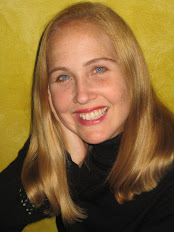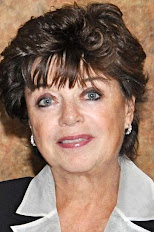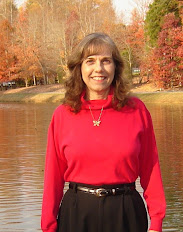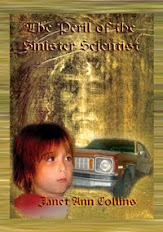So, read on. . .
There are oodles of picture books out there. Some are waiting in slush piles, while others are contenders, already going through the approval process. Then, there are all those bookstores, large and small, that have shelves loaded with picture books. Every conceivable theme and plot line has already been written - thousands of times. So, how can you hit the jackpot with your PB?
The First Thing to Consider:
Don't worry about finding a new kind of story - it's not going to happen mates! What you need is a neat out-of-the-box scenario: a fresh new way to write a fun story about bunnies, horses, moonbeams or new babies - whatever. Nothing is set in stone. Jot down your ideas, and then turn them sideways, upside-down or inside-out. All things being equal, quirky and fresh gets the brass ring.
Think of the picture books you loved as a kid, or now love to read to your kids. Take one of these stories and think about what made it appeal to you or your child. Then reinvent it. This is not plagiarism. It is dissecting a PB: plot, characters and setting, until you know the secret of its success. Use that knowledge to craft a new story, completely your own. Exploit the principles of success you discovered while doing the dissecting.
The Writing:
Tight writing for picture books is the golden rule. Use powerful and active verbs,
Great verbs are a PB writer's best friend. Search for adjectives that surprise and delight your reader. Be specific when referring to people, places, and events. Simplicity is a splendid goal. Beware like, nice, very, walked, sat, ran, and their ilk. You can find better, stronger, and more innovative words. Seemed, I think, perhaps and some - all four have weakness in common. Write with words that signify strength, action and power. Think of your text as a garden with rampant growth. Prune those sentences until your word count is way below 1,000 words.
The writer that prunes ruthlessly is the one who becomes published.
Your First Paragraph or Verse:
Editors are buried under piles of manuscripts waiting to be read, work related in-office conferences, and time spent conferring with the art director, and dictating rejection letters - to name just a few chores that crowd their days. If your first few lines don't make an editor say, "Wow!" you can forget advances and royalty payments. Those first few lines need to make an editor eager to read more. Your goal is to have her think, "Hey, this is something new and different."
So, set up those first lines as if your publishing life depended on them - because it does. Make them fun: full of action or quirky ideas. Introduce the main character in a way that makes a lasting impression. Describe a wild and way-out setting. Craft those lines using ideas with a twist, and characters that kids demand to read about, over-and-over. Of course this will cause you big problems with the rest of your story. Why? Because you have already set an incredibly high writing standard, and you must maintain that standard until THE END.
The Right Publisher:
You must find a publisher who publishes books similar to yours. More rejections are sent because the author chose the wrong publisher, than because the writing was lousy. If you write picture books about animals, it is a waste of time sending your manuscript to religious, non-fiction, or mid-grade only publishers. In addition, you need to fine-tune your search even further. IE: Some publishers will accept animal stories, but not stories about talking animals. It is a simple matter of doing your homework.
Finding a publisher that has an editor who needs a book like yours, loves your writing style, and is in sync with your ideas for your book can be a crap shoot. Because, unless you are already know to the editor (translation: published by them and made them lots of money), or have editorial or publishing connections via different sources, you are left to wade through miles of publishing websites, looking at the books they have recently published, plus their submission guidelines.
The CWIM (Children's Writers and Illustrator's Market) is a wonderful source of legitimate publishing houses, website addresses, and clues about what publishers want from you. Book stores and libraries are other places you can find stories along the lines of yours. Make notes about who published them.
Harold Underdown's Purple Crayon has many useful pages. Here are THREE articles that will help you search for a publisher. Harold's website has far too many great articles to mention all the useful ones- check it out Here.
• Who's Moving Where
• Magazines, Organizations & Websites
• Basic Information: Several articles on how to be published.
Then there is:
• Secrets of Writing for Children : Lots of help and guidance.
• Amazon Book/Publisher Search: For more focused searches on individual authors, publishers, or subjects, the best bet is Amazon's dedicated search page.
• Writer's Market: They update information regularly, including editors to contact. They have a program where you can track submissions, but it costs to join. Writer's Market also has a free update site. You don't have to subscribe to the magazine to get the updates.
• Verla Kay's WebSite: A mult-published author. A wonderful resource site. Click Artists & Writers and then Transcripts. Look for back transcripts of chat with editors.
In Conclusion:
The principles of making sure your manuscript is ready for a publisher/editor is the same for all books: tight writing, great choice of words, strong story and memorable characters. For picture books, you need only a few words, and then weave them into a marvelous story. Your book must keep the interest of small children with the attention span of a puppy. How can an undertaking that looks so simple end up being one of the most difficult tasks a writer can tackle?
Don't ask me. I'm hooked!
===================
Margot Finke is an Aussie transplant now living in Oregon. She has 10 published picture books, and also writes young YA fiction. Her Manuscript Critique Service promises to help you write “As tight as your granny’s new girdle,” and her personal guidance will show you how to WOW an editor.
BOOKS and Manuscript Critiques: http://www.margotfinke.com/
HOOK KIDS on READING: http://hookkidsonreading.blogspot.com/
Margot’s Magic Carpet: http://perfectmagiccarpet.blogspot.com/












































3 comments:
Margot, fabulous advice as always. Thanks for sharing.
Hi Margot:
Terrific article and tips.
Thank you!
Regards,
Donna
Award-winning Children’s Author
Write What Inspires You Blog
The Golden Pathway Story book Blog
Donna M. McDine’s Website
Author PR Services
Margot, I love your enthusiasm for picture books. Your advice is always good--you know what you're doing.
Post a Comment